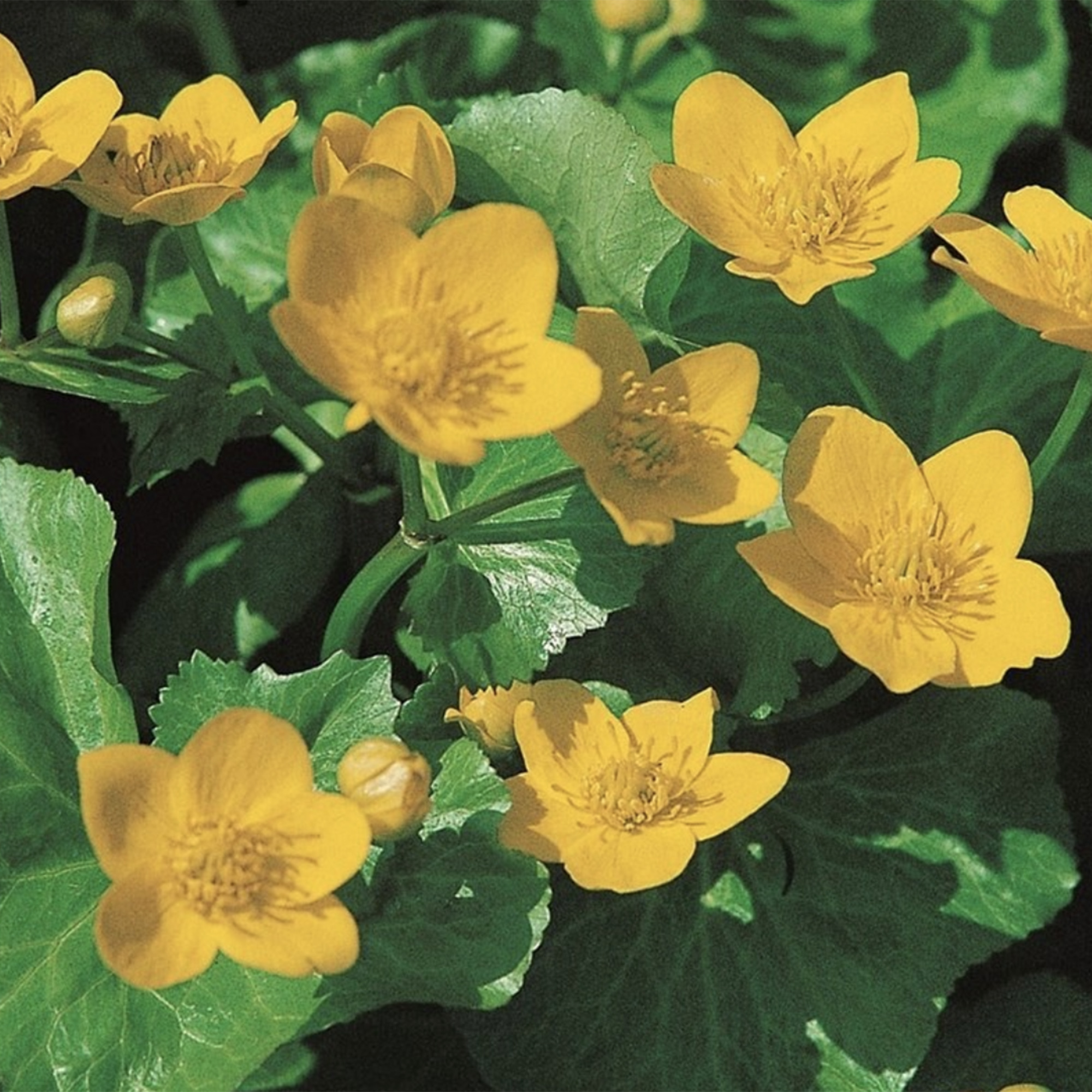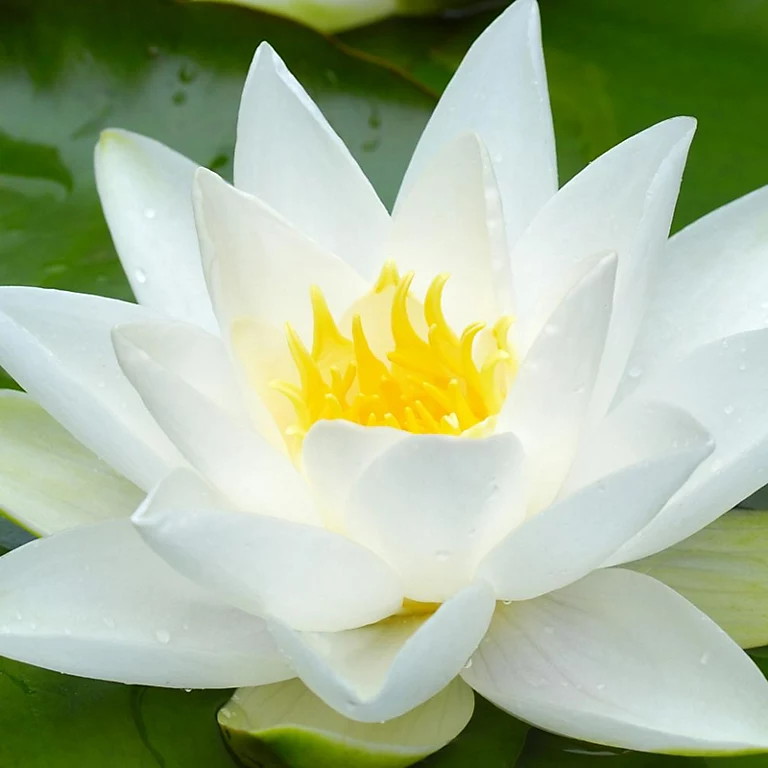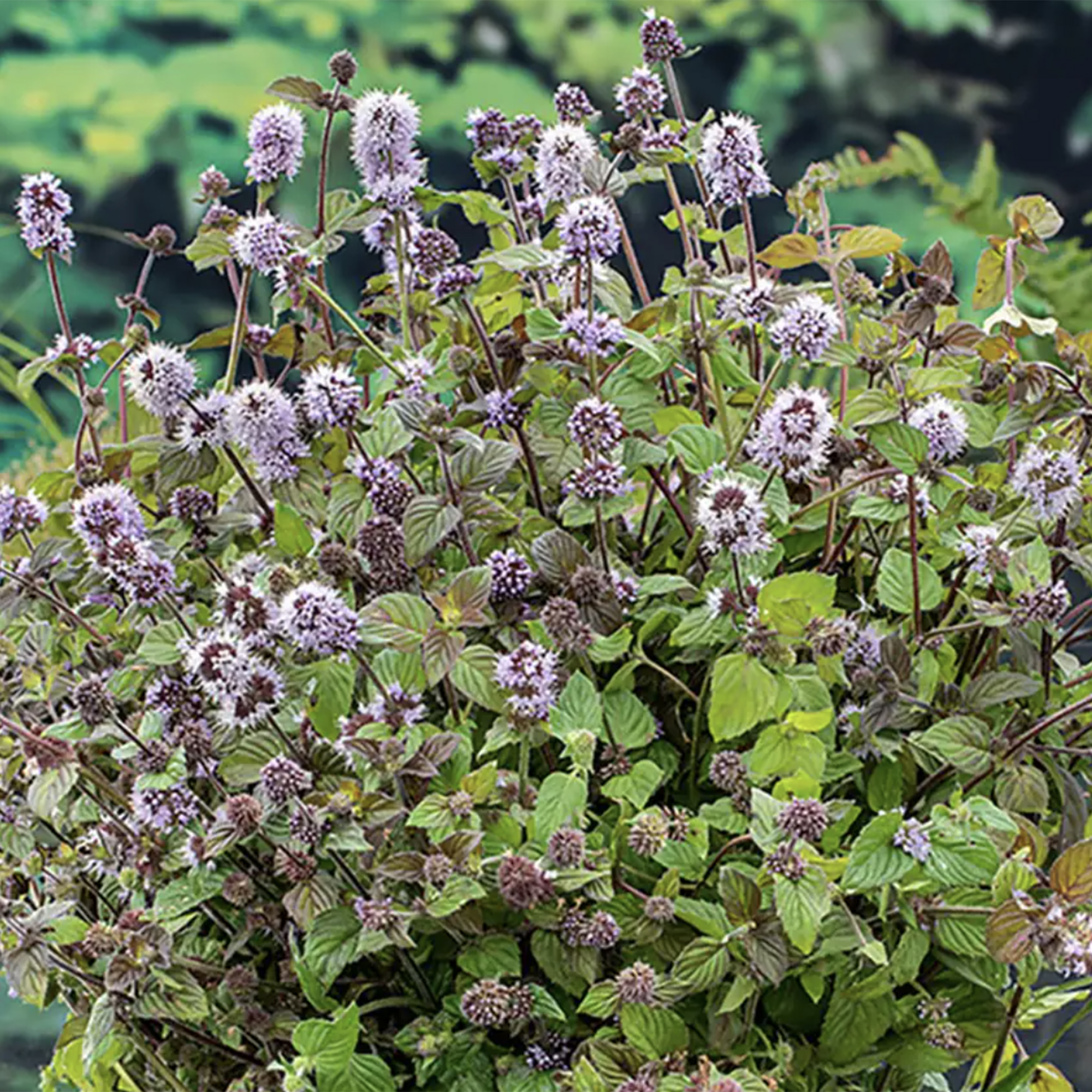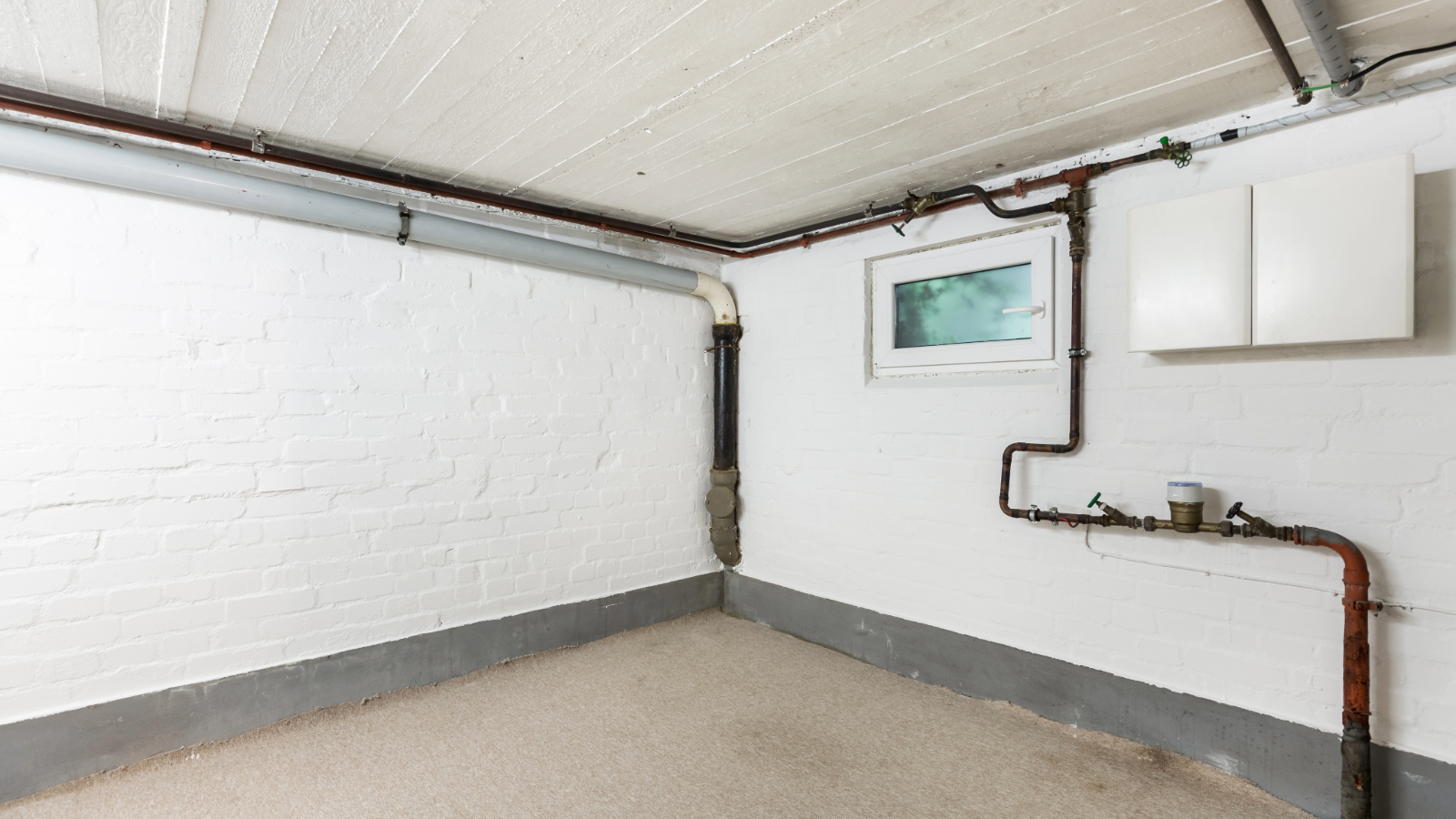Natural swimming pools vs traditional pools — experts compare the environmental, cost and visual impacts of each
Which of these outdoor spa moments is right for your garden landscaping?
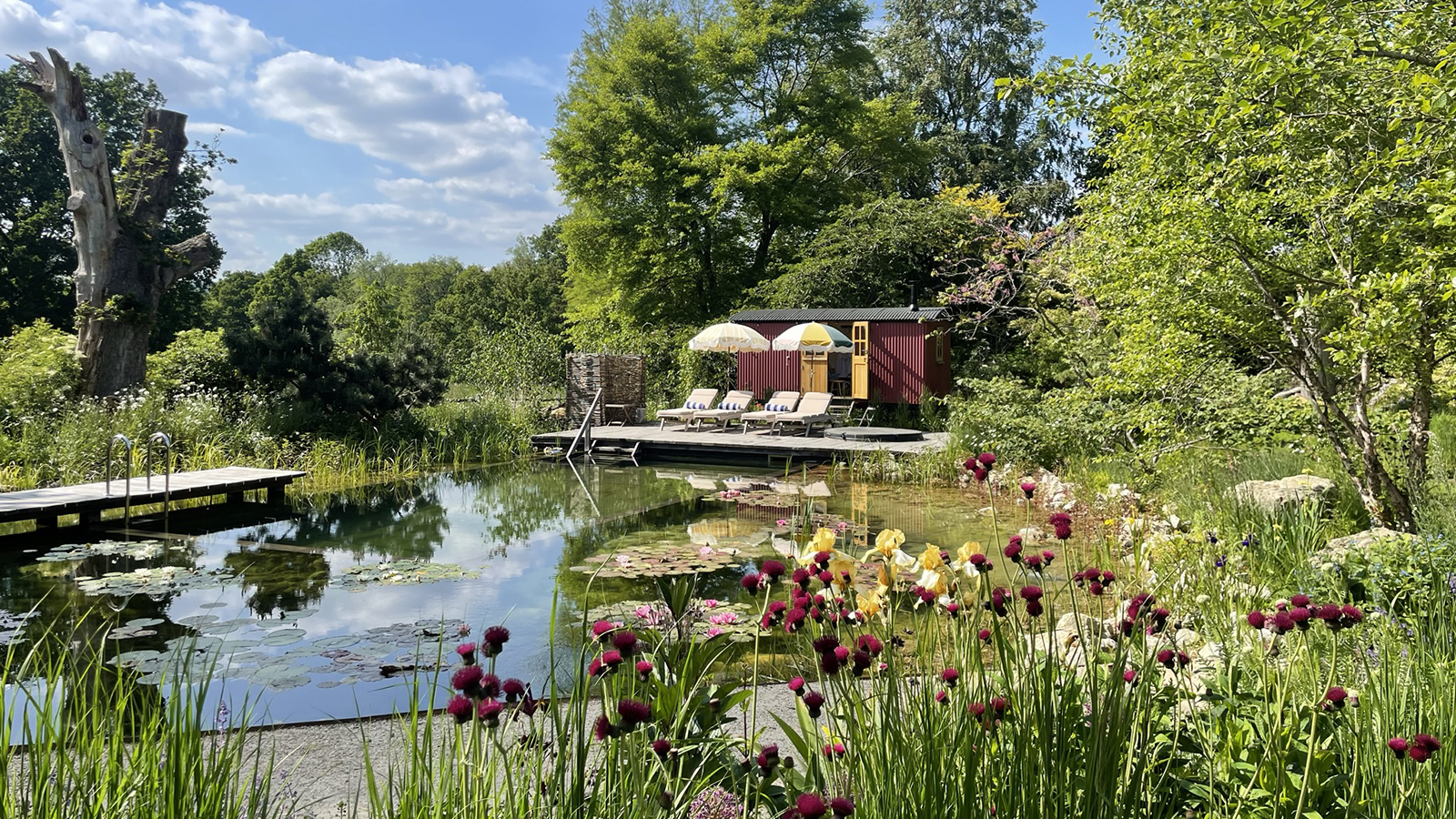
Natural swimming pools vs traditional pools each offer something different to your garden. Visually they are quite a stark contrast, with natural pools tending to blend more into their environment and become part of the ecosystem, with areas of planting and a "regeneration zone".
Chlorine pools appear more sleek and man-made, relying on hard landscaping materials to fit with them. They also need more "kit" in the form of filters, pumps and heaters, which don't need to be factored in when designing a natural pool.
Ultimately they both offer the same thing, a beautiful garden feature for swimming and bathing, but aesthetically and functionally they vary greatly. Which actually helps when deciding which swimming pool is right for your garden.
Natural swimming pools vs traditional pools
There will always be costs and maintenance associated with all swimming pool types, but if you are set on a swimming pool for your back garden then there is always a way to make it work for you.
"The water in a natural swimming pool is filtered by the plants and micro-organisms in the water while a traditional pool is filtered and cleaned by chemicals and a mechanical filtration system. Natural pools have a greater variety of designs and can be customised to almost any shape, size and aesthetic," says Thomas Goodman, construction expert at My Job Quote.
"Traditional pools generally have an obvious man-made look," says Thomas, though there are pool landscaping ideas which can make them appear more muted. "Running costs for a natural pool will be lower than a traditional pool as most of the cleaning of the water is done naturally although pumps and filters can be added," says Thomas.

Thomas Goodman has worked as a property and construction expert for MyJobQuote for six years and has worked in the construction industry for more than 20 years. Thomas continues to work on building projects, while also providing expert construction and property advice to industry professionals and DIY enthusiasts.
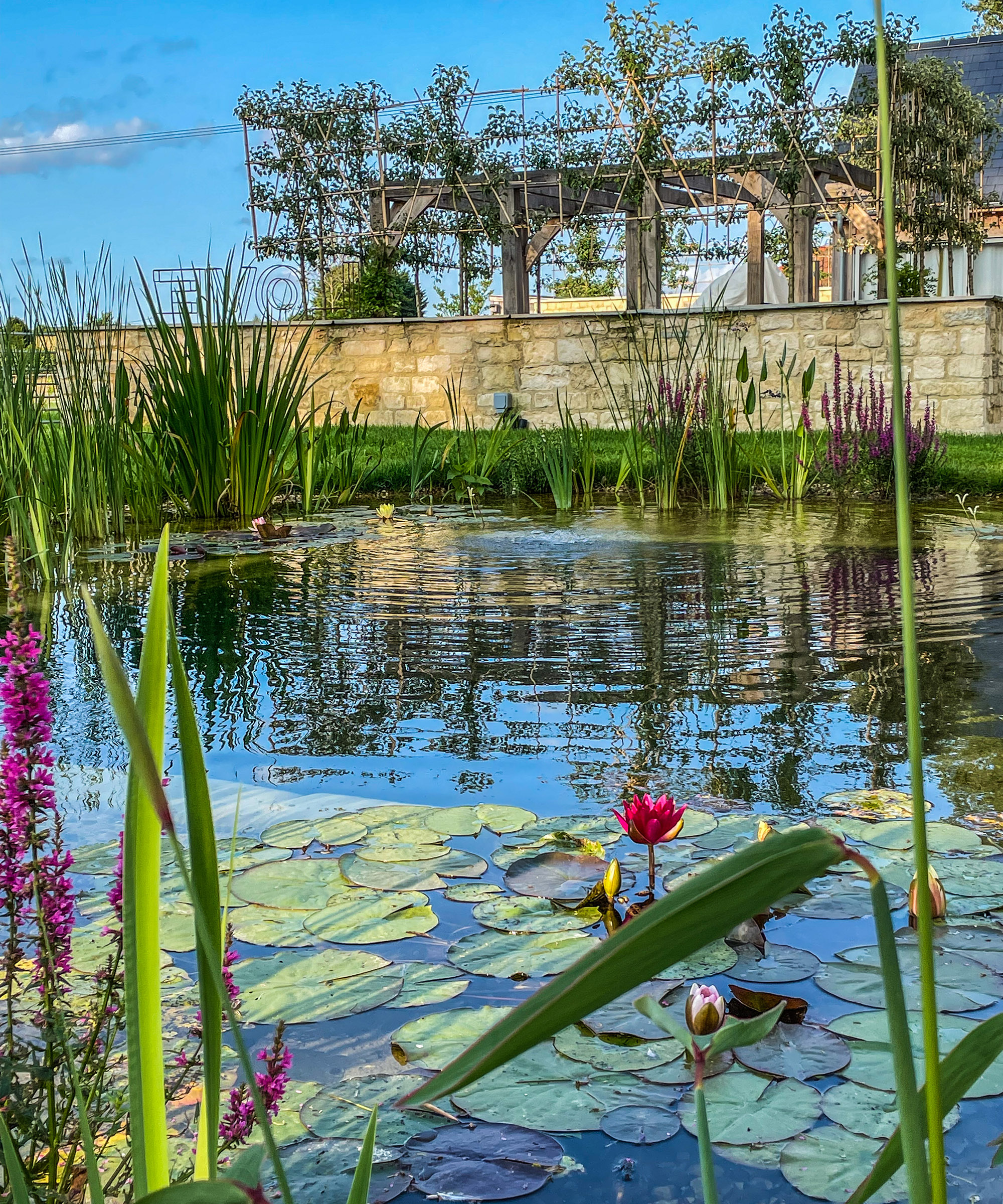
Natural swimming pools: Pros and cons
"You can go for a natural swimming pond, which remains uncovered all year because natural pools are not heated, which saves the cost of the cover and heating, and allows your pool to double up as an ornamental body of water," says landscaping designer Marlene Lento.
Bring your dream home to life with expert advice, how to guides and design inspiration. Sign up for our newsletter and get two free tickets to a Homebuilding & Renovating Show near you.
"Part of this set-up are regeneration zones planted with plants that purify the water. These zones are shallow and heat as water circulates through them, the pool heats up to a comfortable temperature quickly in summer," adds Marlene.

Marlene Lento designs bespoke gardens that encompass every aspect of today’s outdoor living space including outdoor entertainment areas, lighting and planting schemes, pools, and natural swimming ponds.
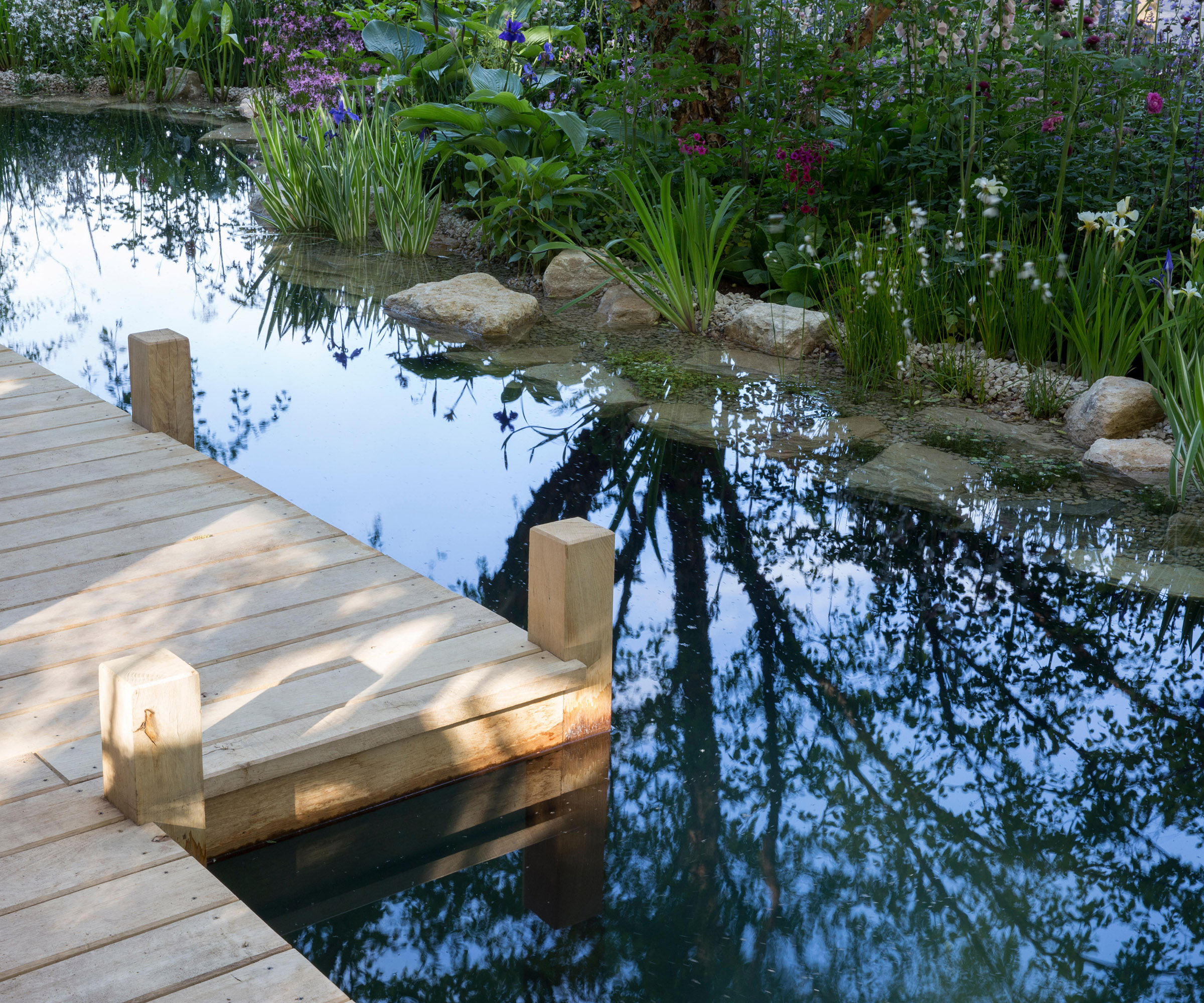
Pros of a natural swimming pool:
Thomas Goodman outlines the pros and cons of natural pools below including swimming pool costs, maintenance, aesthetics and durability:
- Chemical-free: a natural swimming pool uses no chemicals so is more environmentally friendly.
- Natural aesthetic: natural pool landscaping is easy as they can be almost any shape and blend well into a garden. Some may feel that the natural environment means a more enhanced relaxation.
- Costs: you don't need to heat a swimming pool if it's natural so there are no heating costs attached to natural pools which contribute to their low running costs.
- Longevity: if installed by a qualified professional they will last many decades with yearly maintenance.
Shop plants for natural pools
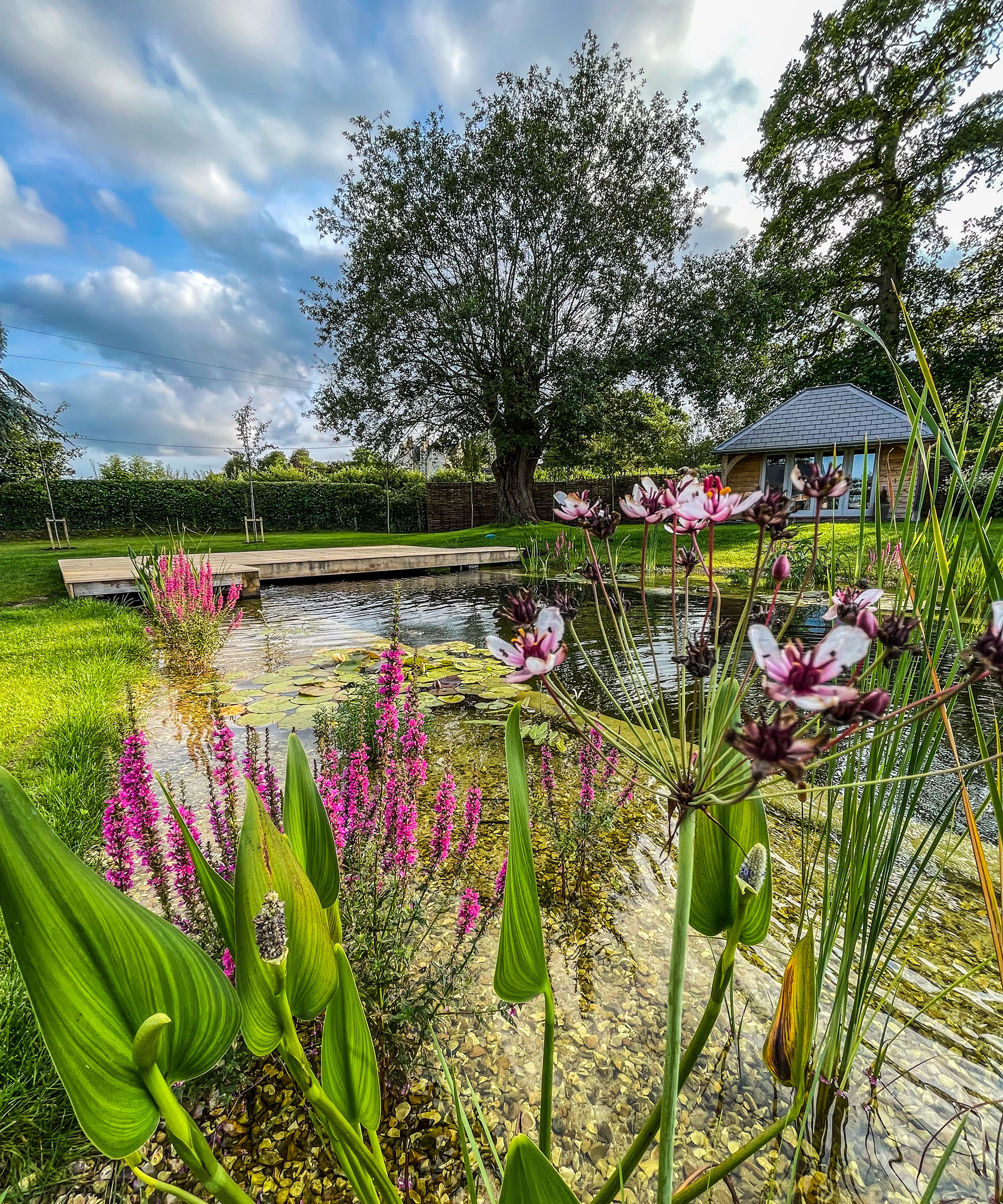
Cons of a natural swimming pool:
- Lack of heat: natural pools cannot be heated. However their regeneration areas are designed to warm the water naturally in summer.
- Essential plant life: though some people may see the lush plant life around their pool as a benefit, the plants that are needed for filtration require regular maintenance. The area of the pool with the plants cannot be used for swimming.
- Water testing: more frequent water testing may be needed to control buildup of algae.
Traditional pools: Pros and cons
Those looking for a clean and contemporary aesthetic will likely prefer the style of traditional pools. If you have limited space this is probably your best option too as you don't have to account for the plants and regeneration zone.
Garden designer Fi Boyle suggests if you already have a traditional pool you can look at converting it to a non-chemical pool. "There are some great companies out there that do this such as Water Artisans. It will need a regeneration zone and so this in turn will make the whole space much more interesting," says Fi.
Thomas Goodman outlines the pros and cons below:

Award-winning garden designer and head of Fi Boyle Garden Landscape Design & Consultancy, Fi has a wealth of experience designing pools, both natural and traditional, in UK gardens.
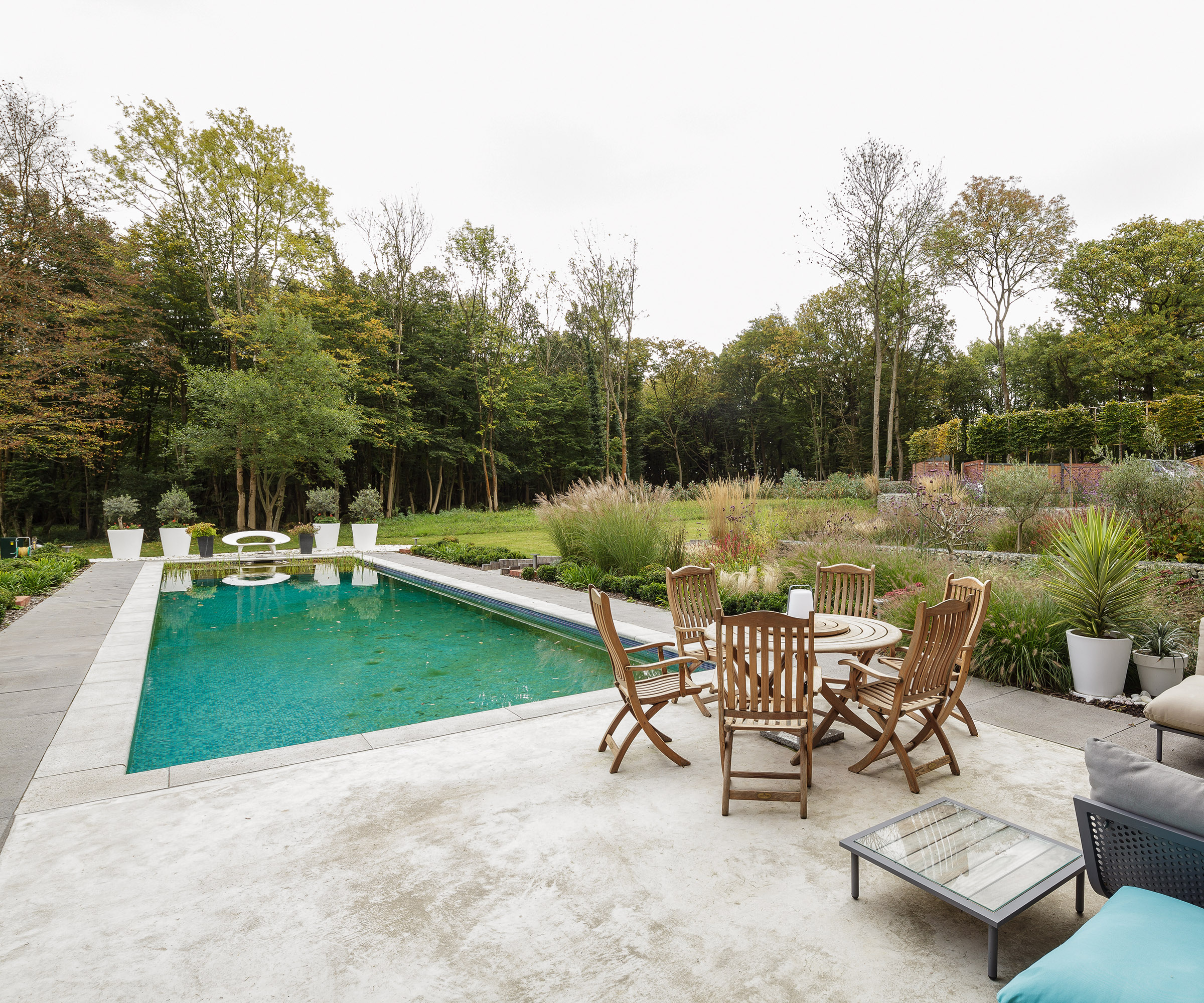
Pros of traditional swimming pools:
- Chemical filtration: Most cleaning and filtration is done automatically by the filtration system and the water will be bacteria-free and crystal-clear thanks to filtration and chlorine.
- Heated: Unlike natural swimming pools, water can be heated to your own specifcations.
- Size: how much space you need for a swimming pool is different for natural swimming pools vs traditional pools. There is no need for a filtration zone therefore all of the pool area can be used for swimming. There is a range of sizes and designs to choose from.

Cons of traditional swimming pools:
- Cost: traditional pools tend to be more expensive to build, run and maintain than natural pools. Heat pumps for swimming pools are seen as the most economical way to heat a pool but still has costs associated.
- Environment: as well as chemicals and filtration systems required, energy is needed to heat a traditional pool.
- Stands out in a landscape: Traditional pools tend not to blend into the natural surroundings and are mostly rectangular in shape, any other shapes will be more expensive.
- Covers: though some may see the ability to cover your pool as a benefit, it's not necessary to have them for natural pools, whereas they are essential for traditional pools when they're not in use
FAQs
Do you need planning for a natural swimming pool?
As natural swimming pools require no building structures or heating system installation they do not usually require planning permission. However, your local authority may have limits on the size of pools allowed for your space and where they are positioned in relation to your house.
"As with any large building project it’s advisable to consult your local authority about any swimming pool planning permission and building regs that you may need to adhere to. Most people don’t need planning permission as a pool is considered a garden project and usually falls within permitted development rights. However, if you live in an Area of Outstanding Natural Beauty, in one of the National Parks or the Broads you will need planning permission," says construction expert at My Job Quote Thomas Goodman.
So it's always worth checking on your local council website to avoid any potential issues.
Whether natural or traditional, planning a swimming pool is a complex process, have a look at our guide to swimming pool mistakes, to avoid any potential mishaps and consider solar panels for swimming pools as a way of reducing your energy bills.
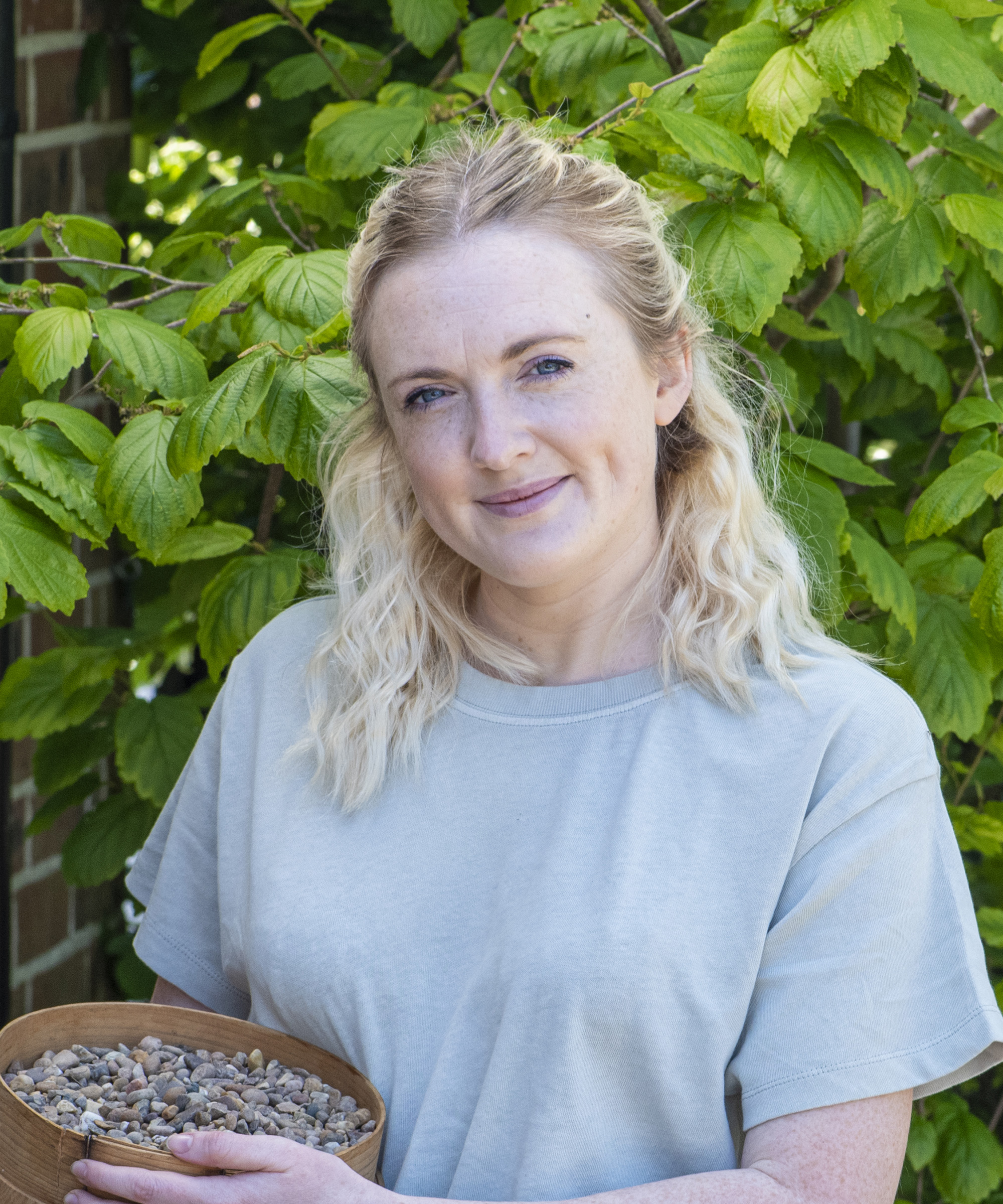
Teresa was part of a team that launched Easy Gardens in 2018 and worked as the Editor on this magazine. She has extensive experience writing and editing content on gardens and landscaping on brands such as Homes & Gardens, Country Homes & Interiors and Living Etc magazine. She has developed close working relationships with top landscape architects and leading industry experts, and has been exposed to an array of rich content and expertise.
In 2020 Teresa bought her first home. She and her partner worked alongside architects and builders to transform the downstairs area of her two bedroom Victorian house in north London into a usable space for her family. Along the way she learned the stresses, woes and joys of home renovation, and is now looking to her next project, landscaping the back garden.
